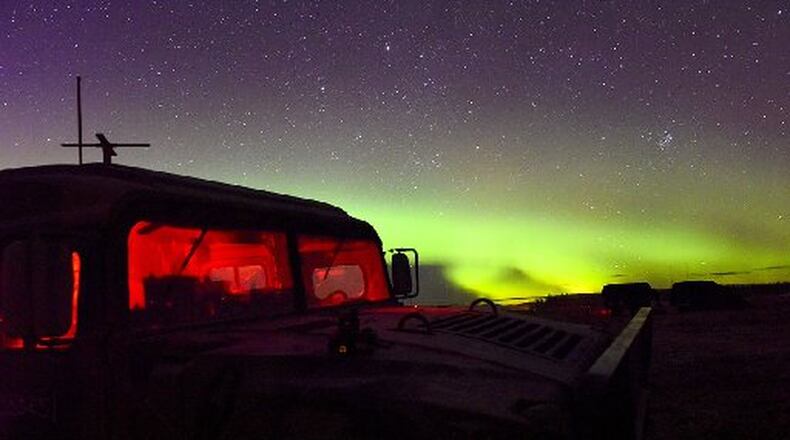This past weekend parts of the northern United States had the chance to see this ethereal display of colors, but how they form may be more spectacular than the sight themselves.
In order to really appreciated their beauty, you should know where they come from.
TRENDING: State reps want ban on ‘sanctuary’ schools and cities for immigration
You’ll have to leave our planet and travel to the center of our solar system to get the answer. That’s right, it all starts with the brightest star in our sky — the sun.
The sun is 93 million miles away, but the effects of storms occurring on the surface of the sun are far-reaching.
Solar storms are at the center of this celestial phenomenon. According to NASA, solar storms occur when a large-scale magnetic eruption, often causing a coronal mass ejection (CME) and associated solar flare, accelerates charged particles into the solar system at a high rate of speed. Basically, charged particles of plasma are blown out away from the surface of the sun and, if pointed in the right direction, will collide with our planet. Thankfully, the magnetic field that surrounds Earth is there to protect us but is also an integral part to the northern lights display.
MORE: NFL to build new field at Dayton park where first game was played
On a daily basis, the magnetic field surrounding Earth works to deflect away and/or absorb potentially harmful rays and particles from outer space. Without it, life as we know it may not exist. As the sun’s plasma particles hit our magnetic field, they are drawn to the north and south pole. It’s these particles and the interaction with the magnetic field and Earth’s atmosphere that cause the auroras, and why they are best seen in areas closer to the poles.
In the northern hemisphere, the auroras are called aurora borealis, In the southern hemisphere, they’re called aurora australis.
As I’m sure you’ve seen in photographs, or if you’ve been lucky enough in person, the colors typically associated with the auroras are green, yellow, blue, red, pink, purple, orange and white. Oxygen is thought to cause green colors while nitrogen blues and reds. It’s also been theorized the altitude of the collision may determine a variety of other colors.
This past weekend’s event was somewhat rare — not because of the strength or brightness, but more that it happened in the first place. As stated above, the northern lights can only happen if a solar storm has occurred. While one did occur, it’s at a time when they are less likely to happen. Every 11 years the sun cycles from maximums to minimums for solar storms. During its peak years, solar storms are more frequent and stronger. The last time the sun was in its peak phase was in 2013. This year would technically be when the sun is entering its minimum phase — resulting in a lesser chance for storms.
NASA and NOAA (National Oceanic and Atmospheric Administration) monitor solar activity and issue aurora alerts when one is expected. You can find more information about solar flares, northern lights and when they’ll occur by visiting their agency websites. Of course, if one is expected to be visible in southwest Ohio, I’ll post information on my social media accounts. You can follow me on Facebook, Twitter and Instagram for updates.
About the Author
